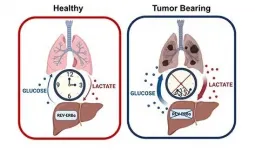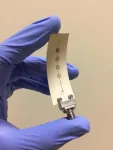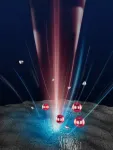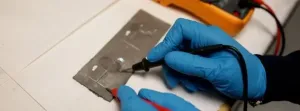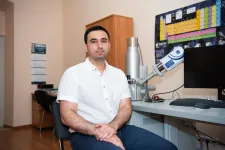Hydrofracking environmental problems not that different from conventional drilling
2021-06-25
(Press-News.org) Crude oil production and natural gas withdrawals in the United States have lessened the country's dependence on foreign oil and provided financial relief to U.S. consumers, but have also raised longstanding concerns about environmental damage, such as groundwater contamination.
A researcher in Syracuse University's College of Arts and Sciences, and a team of scientists from Penn State, have developed a new machine learning technique to holistically assess water quality data in order to detect groundwater samples likely impacted by recent methane leakage during oil and gas production. Using that model, the team concluded that unconventional drilling methods like hydraulic fracturing - or hydrofracking - do not necessarily incur more environmental problems than conventional oil and gas drilling.
The two common ways to extract oil and gas in the U.S. are through conventional and unconventional methods. Conventional oil and gas are pumped from easily accessed sources using natural pressure. Conversely, unconventional oil and gas are acquired from hard-to-reach sources through a combination of horizontal drilling and hydraulic fracturing. Hydrofracking extracts natural gas, petroleum and brine from bedrock formations by injecting a mixture of sand, chemicals and water. By drilling into the earth and directing the high-pressure mixture into rock, the gas inside releases and flows out to the head of a well.
Tao Wen, assistant professor of earth and environmental sciences (EES) at Syracuse, recently led a study comparing data from different states to see which method might result in greater contamination of groundwater. They specifically tested levels of methane, which is the primary component of natural gas.
The team selected four U.S. states located in important shale zones to target for their study: Pennsylvania, Colorado, Texas and New York. One of those states - New York - banned the practice of hydrofracking in 2015 following a review by the NYS Department of Health which found significant uncertainties about health, including increased water and air pollution.
Wen and his colleagues compiled a large groundwater chemistry dataset from multiple sources including federal agency reports, journal articles, and oil and gas companies. The majority of tested water samples in their study were collected from domestic water wells. Although methane itself is not toxic, Wen says that methane contamination detected in shallow groundwater could be a risk to the relevant homeowner as it could be an explosion hazard, could increase the level of other toxic chemical species like manganese and arsenic, and would contribute to global warming as methane is a greenhouse gas.
Their model used sophisticated algorithms to analyze almost all of the retained geochemistry data in order to predict if a given groundwater sample was negatively impacted by recent oil and gas drilling.
The data comparison showed that methane contamination cases in New York - a state without unconventional drilling but with a high volume of conventional drilling - were similar to that of Pennsylvania - a state with a high volume of unconventional drilling. Wen says this suggests that unconventional drilling methods like fracking do not necessarily lead to more environmental problems than conventional drilling, although this result might be alternatively explained by the different sizes of groundwater chemistry datasets compiled for these two states.
The model also detected a higher rate of methane contamination cases in Pennsylvania than in Colorado and Texas. Wen says this difference could be attributed to different practices when drillers build/drill the oil and gas wells in different states. According to previous research, most of the methane released into the environment from gas wells in the U.S. occurs because the cement that seals the well is not completed along the full lengths of the production casing. However, no data exists to conclude if drillers in those three states use different technology. Wen says this requires further study and review of the drilling data if they become available.
According to Wen, their machine learning model proved to be effective in detecting groundwater contamination, and by applying it to other states/counties with ongoing or planned oil and gas production it will be an important resource for determining the safest methods of gas and oil drilling.
INFORMATION:
Wen and his colleagues from Penn State, including Mengqi Liu, a graduate student from the College of Information Sciences and Technology, Josh Woda, a graduate student from Department of Geosciences, Guanjie Zheng, former Ph.D. student from the College of Information Sciences and Technology, and Susan L. Brantley, distinguished professor in the Department of Geosciences and director of Earth and Environmental Systems Institute, recently had their findings published in the journal Water Research.
[Attachments] See images for this press release:

ELSE PRESS RELEASES FROM THIS DATE:
2021-06-25
Irvine, CA - June 25, 2021 - New research from the University of California, Irvine reveals how the circadian regulation of glucose production in the liver is lost during lung cancer progression, and how the resulting increase in glucose production may fuel cancer cell growth.
The new study titled, "Glucagon regulates the stability of REV-ERBα to modulate hepatic glucose production in a model of lung cancer-associated cachexia," published today in Science Advances, illustrates how the circadian clock is regulated under conditions of stress such as during lung cancer progression and cancer-associated tissue wasting ...
2021-06-25
After suffering a stroke, patients often are unable to use the arm on their affected side. Sometimes, they end up holding it close to their body, with the elbow flexed.
In a new study, Northwestern University and Shirley Ryan AbilityLab researchers have discovered that, in an attempt to adapt to this impairment, muscles actually lose sarcomeres -- their smallest, most basic building blocks.
Stacked end to end (in series) and side to side (in parallel), sarcomeres make up the length and width of muscle fibers. By imaging biceps muscles with three noninvasive methods, the researchers found that stroke patients had fewer sarcomeres along the length ...
2021-06-25
ROCHESTER, Minn. -- Researchers at Mayo Clinic Cancer Center are studying a potential new chimeric antigen receptor-T cell therapy (CAR-T cell therapy) treatment for multiple myeloma. Their findings were published on Friday, June 24, in The Lancet.
"CAR-T cell therapy is a type of immunotherapy that involves harnessing the power of a person's own immune system by engineering their T cells to recognize and destroy cancer cells," says Yi Lin, M.D., a Mayo Clinic hematologist and lead author of the study.
Dr. Lin says the Food and Drug Administration approved ...
2021-06-25
The promise of 5G Internet of Things (IoT) networks requires more scalable and robust communication systems -- ones that deliver drastically higher data rates and lower power consumption per device.
Backscatter radios ? passive sensors that reflect rather than radiate energy ? are known for their low-cost, low-complexity, and battery-free operation, making them a potential key enabler of this future although they typically feature low data rates and their performance strongly depends on the surrounding environment.
Researchers at the Georgia Institute of Technology, Nokia Bell Labs, and Heriot-Watt University have found a low-cost way for backscatter radios to support high-throughput communication and 5G-speed Gb/sec data transfer using only a single transistor when previously ...
2021-06-25
Three years ago, Arthur Ashkin won the Nobel Prize for inventing optical tweezers, which use light in the form of a high-powered laser beam to capture and manipulate particles. Despite being created decades ago, optical tweezers still lead to major breakthroughs and are widely used today to study biological systems.
However, optical tweezers do have flaws. The prolonged interaction with the laser beam can alter molecules and particles or damage them with excessive heat.
Researchers at The University of Texas at Austin have created a new version of optical tweezer technology that fixes this problem, a development ...
2021-06-25
Want a smartphone that stretches, takes damage, and still doesn't miss a call?
A team of Virginia Tech researchers from the Department of Mechanical Engineering and the Macromolecules Innovation Institute has created a new type of soft electronics, paving the way for devices that are self-healing, reconfigurable, and recyclable. These skin-like circuits are soft and stretchy, sustain numerous damage events under load without losing electrical conductivity, and can be recycled to generate new circuits at the end of a product's life.
Led by Assistant Professor Michael Bartlett, the team recently published its findings in END ...
2021-06-25
Scientists from the National University of Science and Technology "MISIS" (NUST MISIS) in cooperation with their colleagues from the Siberian Federal University and the Research and Production Centre of Magnetic Hydrodynamics (Krasnoyarsk) have developed a technology for producing a unique heat-resistant aluminium alloy with improved durability.
According to the researchers, this new alloy could replace more expensive and heavier copper conductors in aircraft and high-speed rail transport. The study results were published in an interdisciplinary, peer-reviewed journal, the Materials Letters. (https://www.sciencedirect.com/science/article/abs/pii/S0167577X2100896X)
Researchers have created a method for producing ...
2021-06-25
Night and day, oil tankers, yachts and cargo ships stacked with shipping containers ply the 80-kilometer (50-mile) waterway through the jungles of Panama between the Atlantic and the Pacific Ocean: about 40 ships every 24 hours. But even though the Canal is fed by freshwater rivers that empty through the locks on each end, a system that generally prevents fish and smaller marine invertebrates from hopping from ocean to ocean, some still manage to get through, clinging to the hulls of ships. Other invading species arrive from far-flung ports, dumped with ballast water as ships prepare for transit.
"Panama is a major shipping hub that provides amazing opportunities to test key ideas about marine invasions by studying ...
2021-06-25
A team of engineers and clinicians has developed an ultra-thin, inflatable device that can be used to treat the most severe forms of pain without the need for invasive surgery.
The device, developed by researchers at the University of Cambridge, uses a combination of soft robotic fabrication techniques, ultra-thin electronics and microfluidics.
The device is so thin - about the width of a human hair - that it can be rolled up into a tiny cylinder, inserted into a needle, and implanted into the epidural space of the spinal column, the same area ...
2021-06-25
A new electrode that could free up 20% more light from organic light-emitting diodes has been developed at the University of Michigan. It could help extend the battery life of smartphones and laptops, or make next-gen televisions and displays much more energy efficient.
The approach prevents light from being trapped in the light-emitting part of an OLED, enabling OLEDs to maintain brightness while using less power. In addition, the electrode is easy to fit into existing processes for making OLED displays and light fixtures.
"With our approach, you can do it all in ...
LAST 30 PRESS RELEASES:
[Press-News.org] Hydrofracking environmental problems not that different from conventional drilling

